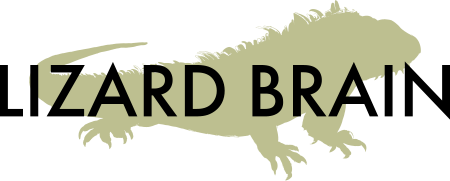2 Design Thinking Energizers: The Fake Australian Vacation and the Parking Lot Circus
I just returned from the annual national conference of the Volunteers of America. The highlight of the event was a workshop delivered by VOA's Robert Gibson, who is leading their innovation efforts at a national level. He introduced design thinking* to conference attendees through a combination of principles and practical activities. Here is one of his principles and two of his activities.
The first principle is "Getting Rid of Negativity Bias." This is the tendency to hold back on good ideas, or worse, to shoot down others' ideas with reasons why they won't work before giving them a fighting chance. It's far easier to shoot down someone else's idea with criticism than to put yourself out there with a new idea. This comes from fear of being publicly judged or humiliated (what Susan Cain in her book "Quiet" calls "evaluation apprehension.") Self-censorship is learned early on, and it sticks. As Robert put it, "This is why we start our education with 64 crayons, and we end our education with one blue pen." He went on to say, "If you think your idea is stupid, just think: someone came up with Sharknado. And that's made millions."
A way to get rid of negativity bias is to practice the improv technique of saying "Yes, And." And a way to practice "Yes, And" is through the Energizer of the Fake Australian Vacation.
Have participants pair off. One begins by saying, "Do you remember when we took a vacation to Australia?" The other responds, "Yes, and we went to the beach?" The other answers, "Yes, and we went surfing?" The other responds, "Yes, and we saw dolphins?" The pair continues the thread, beginning each statement with "yes, and." After about three to five minutes, call time and ask participants to share their stories. Debrief by asking about the mood, the energy, noticing body language and tone of voice, and asking whether it was easy or hard. Tie the Energizer back to the organization by asking about the benefits of using "yes, and" language in the workplace.
The second design thinking Energizer Robert introduced was the Parking Lot Circus. Introduce the Energizer by explaining to the participants that they have been asked by their organization to consider holding a circus in the parking lot of their main location. Ask the small groups to first spend three minutes discussing all the "why nots:" all the reasons why having a circus in the parking lot won't work or is a bad idea. Then, after three minutes, they must shift gears and spend five minutes exploring why having a circus in the parking lot is a good idea. Debrief the Energizer by asking participants to share both whys and why nots, what it was like to transition from exploring why nots to whys, and what were some of the innovative ideas that emerged. Ask participants to connect the Energizer back to the workplace: what is the impact of focusing on why nots? What happens when you shift to focusing on whys?
*If you haven't yet discovered design thinking, let me just say that the application it has to experiential facilitation is huge. Design thinking is what Tim Brown, president and CEO of IDEO, calls, "a human-centered approach to innovation that draws from the designer's toolkit to integrate the needs of people, the possibilities of technology, and the requirements for business success.” Practically, design thinking provides tools so participants can take their ideas beyond the action list and into prototypes and minimum viable products during the facilitation.



